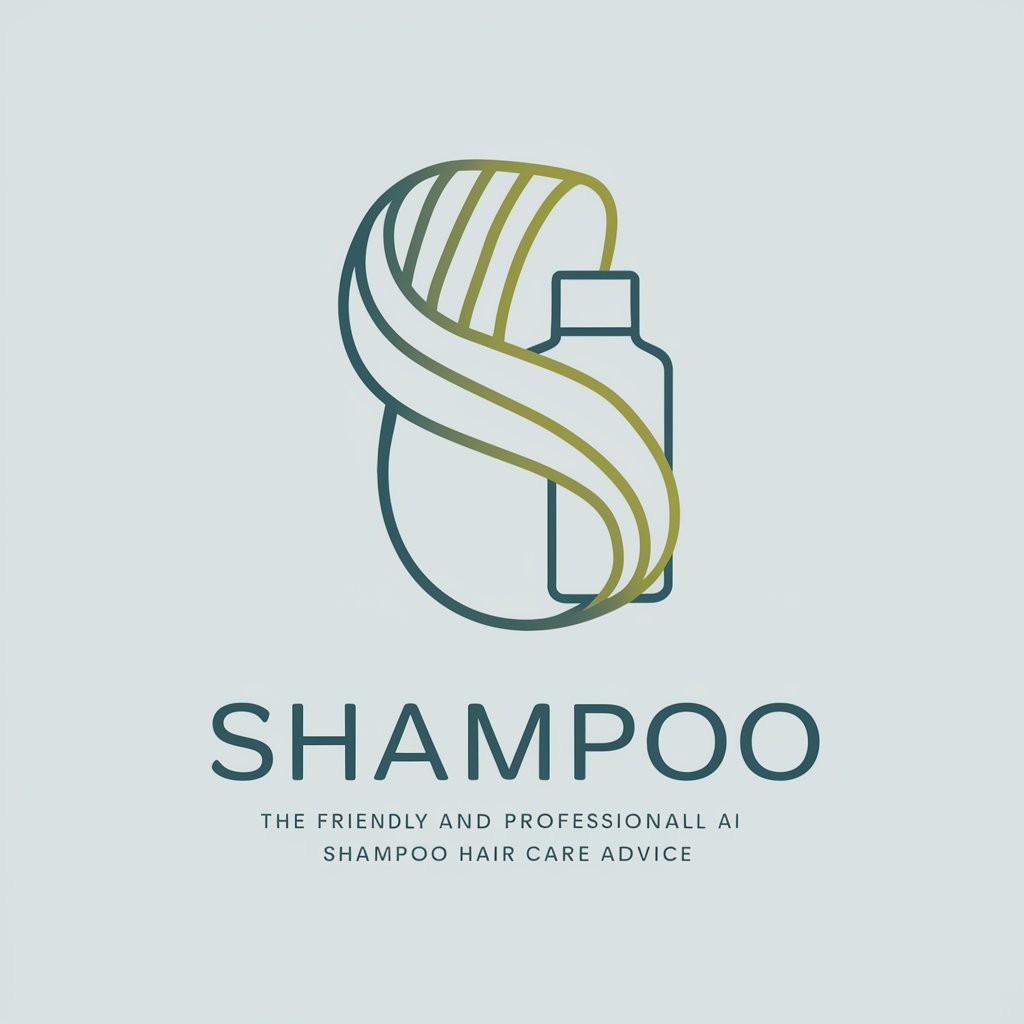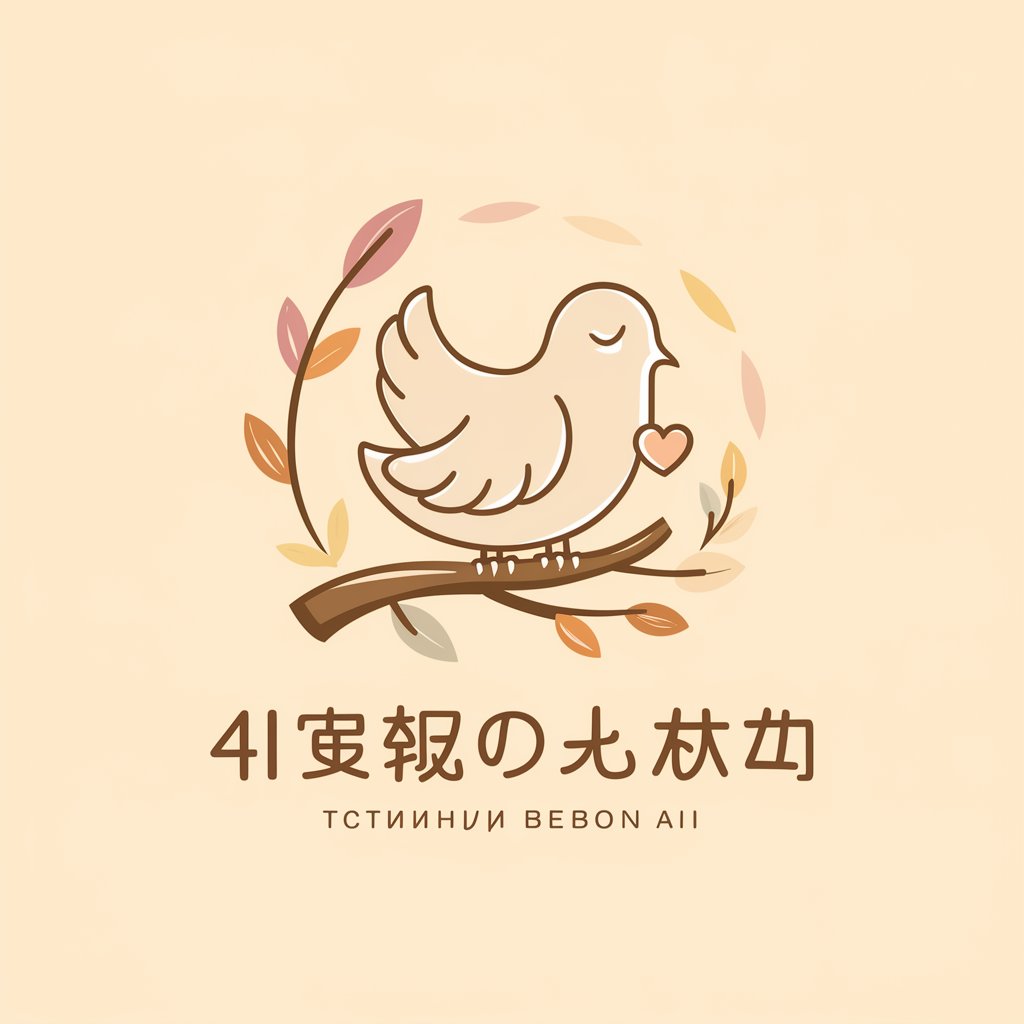Shampoo - Personalized Hair Care Advice

Hello! How can I help with your hair care today?
Empowering Your Hair Care Journey with AI
What type of shampoo is best for curly hair?
Can you recommend a shampoo for dry scalp?
How often should I wash my hair?
What ingredients should I look for in a shampoo for color-treated hair?
Get Embed Code
Introduction to Shampoo
Shampoo is a specialized GPT designed to provide insights and recommendations related to shampoo and hair care. Its primary function is to offer detailed information on various shampoo types, hair care tips, and product recommendations tailored to individual hair needs. Shampoo's design purpose is centered around enhancing users' knowledge and decision-making regarding hair care by providing expert advice on choosing the right shampoo and maintaining healthy hair. For example, if a user has dry, frizzy hair and is looking for a shampoo that moisturizes and smoothens, Shampoo can suggest specific products, explain their benefits, and how they should be used to achieve the best results. This GPT operates with a focus on understanding the user's hair type and concerns to offer personalized shampoo recommendations, avoiding medical advice or diagnosing hair conditions. Powered by ChatGPT-4o。

Main Functions of Shampoo
Personalized Shampoo Recommendations
Example
Recommending sulfate-free shampoos for users with colored hair to prevent color fading.
Scenario
A user with recently dyed hair seeks advice on maintaining hair color. Shampoo provides recommendations for sulfate-free shampoos that gently cleanse without stripping color, ensuring the longevity of their hair color.
Hair Care Tips and Education
Example
Sharing tips on how to deal with dandruff using specific ingredients like tea tree oil.
Scenario
A user struggling with dandruff looks for solutions. Shampoo offers insights into how shampoos with tea tree oil can help manage dandruff, explaining the ingredient's antifungal properties and how to incorporate it into their hair care routine.
Product Comparisons and Reviews
Example
Comparing volumizing shampoos for fine hair to help users make informed choices.
Scenario
A user with fine, limp hair wants to add volume. Shampoo provides a detailed comparison of top volumizing shampoos, including user reviews and effectiveness on different hair types, helping the user choose the best option.
Ideal Users of Shampoo Services
Individuals with Specific Hair Concerns
Users facing issues like dryness, oiliness, dandruff, or hair loss. They benefit from Shampoo's personalized recommendations and advice on products and treatments tailored to address their specific concerns, improving their hair health and confidence.
Beauty Enthusiasts and Hair Care Novices
This group ranges from those passionate about hair care to beginners seeking to learn more. They find value in Shampoo's educational content, product reviews, and tips, helping them make better hair care choices and discover new products suited to their needs.

How to Use Shampoo
Start with a Free Trial
Begin your journey by exploring yeschat.ai for a comprehensive and free trial experience, without the need for logging in or subscribing to ChatGPT Plus.
Wet Your Hair Thoroughly
Before applying shampoo, ensure your hair is fully soaked with water. This helps evenly distribute the shampoo and activate its cleansing properties.
Apply the Shampoo
Dispense a quarter-sized amount of shampoo onto your palms, lather it slightly, then massage into your scalp using your fingertips. Spread the lather gently through the length of your hair.
Rinse Well
Rinse your hair thoroughly with lukewarm water until all the shampoo is washed out. Ensure no residue remains as it can make hair look dull and weighed down.
Follow with Conditioner
After shampooing, apply conditioner to the mid-lengths and ends of your hair. Leave it for a few minutes then rinse. This step is crucial for hydration and maintaining hair health.
Try other advanced and practical GPTs
Agente T-1000
Empowering Human Safety with AI

Escape Room e Quiz
Unlock Learning Through Play

Garden Hoses
Empowering Your Green Thumb with AI

f
Empowering fitness apps with AI innovation

Projeto de Mestrado
Empowering Master's Projects with AI

Digital Marketing Mentor
Empowering Your Digital Marketing Journey with AI

Kyber VSL Wizard
Craft Compelling Sales Stories with AI

Deliverable and Timeline Assistant
Streamlining SEO with AI-powered Precision

EdTechSR Podcast Link Prep via RSS
Streamlining EdTech Content Discovery

안아줄게
Empowering Your Heart with AI

Hermes Trismegistus
Unlocking the mysteries of the cosmos with AI

Curiosity Companion
Empowering curiosity with AI

Shampoo Q&A
What makes a good shampoo for dry hair?
A good shampoo for dry hair should contain moisturizing ingredients like glycerin, natural oils (such as argan or coconut oil), and shea butter. These ingredients help to replenish moisture, nourish the scalp, and leave hair feeling soft and manageable.
How often should I use clarifying shampoo?
Clarifying shampoo should be used sparingly, about once a month, unless you use heavy styling products or have very oily hair. Overuse can strip hair of its natural oils, leading to dryness.
Can shampoo help with dandruff?
Yes, anti-dandruff shampoos containing ingredients like ketoconazole, zinc pyrithione, or selenium sulfide can effectively reduce dandruff by targeting the root cause, such as fungal growth on the scalp.
Is sulfate-free shampoo better?
Sulfate-free shampoos are gentler on the hair and scalp, making them a better choice for individuals with sensitive skin, dyed hair, or conditions like eczema. They cleanse without stripping natural oils.
How can I choose the right shampoo for my hair type?
Select a shampoo based on your hair's specific needs. For oily hair, look for volumizing or balancing shampoos. For dry or damaged hair, choose hydrating or repairing formulas. Always consider your scalp condition as well.
